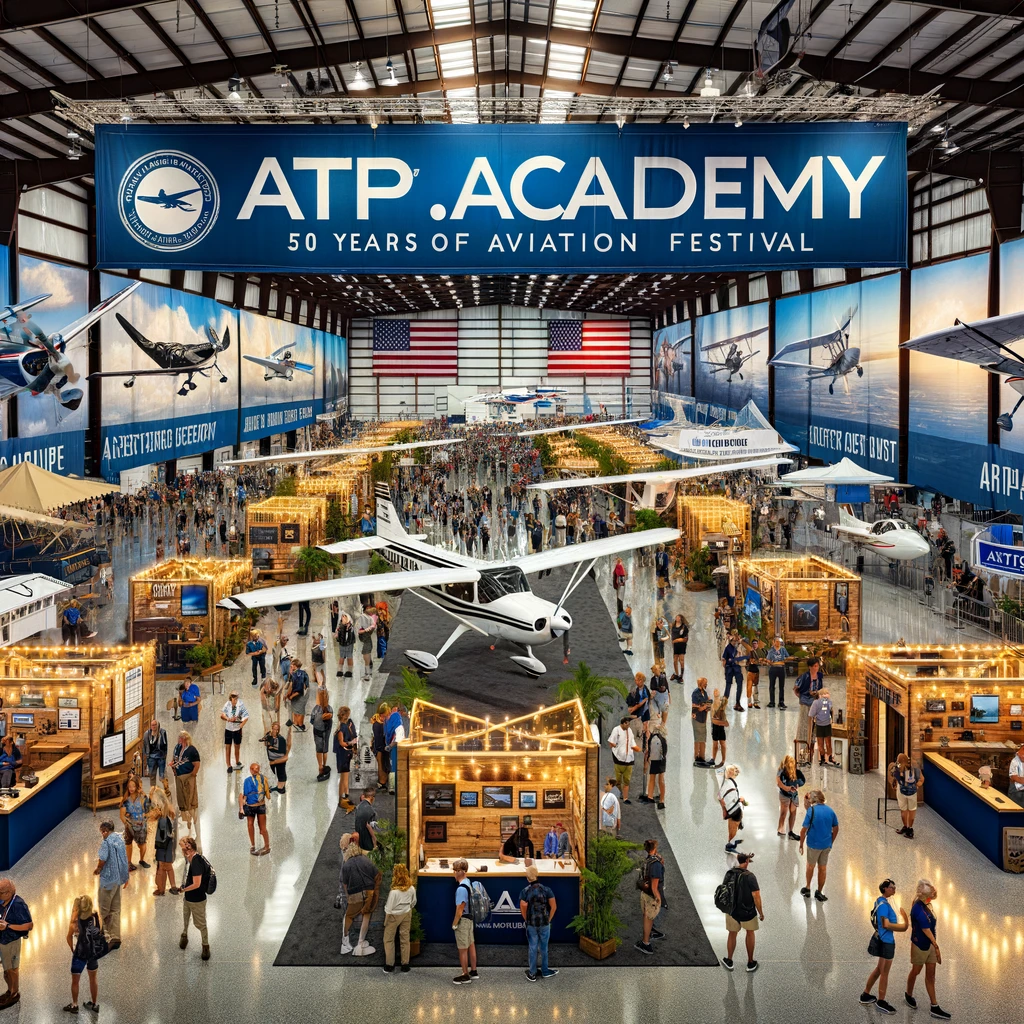What do you need to know before the ATP-CTP class?
Posted on: 01/26/2024
The ATP-CTP course stands for Airline Transport Pilot Certification Training Program. It is considered the training of pilots to obtain the Airline Pilot Certificate. Studying the courses is a mandatory condition for applying for the ATP Multi engine (ME) written test.
In order to prevent accidents similar to the Colgan Air disaster near Buffalo in 2009, the ATP CTP course was developed. The ATP CTP is designed to bridge the knowledge gap between a pilot who holds a Commercial Pilot Certificate and a pilot operating in an air carrier environment. Bridging this gap requires training in essential subject areas as determined by PL 111-216 and recommended by the FOQ ARC. This was subsequently adopted in the “Pilot Certification and Qualification Requirements for Air Carrier Operations” rulemaking as required by § 61.156. Successful completion of the ATP CTP will ensure that an ATP applicant receives the baseline knowledge and experience to prepare them for the duties, responsibilities, and challenges of an air carrier environment.” (source: https://www.faa.gov/documentLibrary/media/Advisory_Circular/AC_61-138A.pdf )
The course is designed to be independent of the type of aircraft used in training. Participants do not need to have knowledge of the specific details of a particular aircraft for the 10 hours of simulator sessions. However, to enhance the effectiveness of the training, we highly recommend spending a little time preparing for the practical sessions on the Airbus 320 aircraft simulator. This simulator is used in our Academy for the ATP-CTP course.
Do I need to prepare at home or study some theoretical materials?
The 30-hour ATP-CTP program will cover areas such as:
- Aerodynamics
- Meteorology
- Air Carrier Operations
- Leadership/Professional Development
- Crew Resource Management
- Safety Culture
Given the extensive classroom hours, our instructors will thoroughly cover all of these topics and encourage group discussions. You do not need to prepare for the theoretical part, and there is no requirement to study any materials beforehand. Therefore, we do not send or provide any additional resources during the lectures.
During the theoretical part of the program, we highly value your experience in airlines or charter operations, which you can openly share with your colleagues and classmates. Every topic will be followed by a group discussion and an exchange of experiences from your flying life. These scenarios will provide you with a wealth of knowledge that goes beyond simple presentation slides.
Is it necessary to prepare at home for the practical part and have knowledge about the Airbus 320 aircraft? What should you do if you have never flown on it or been in the cockpit before?
According to the concept of the ATP-CTP course, the program itself is NOT designed to train students for a specific type of aircraft. The training center providing the ATP-CTP course has the discretion to choose the aircraft whose simulator it has access to. The primary requirement is that the aircraft falls under the Airline Transport category and has a maximum gross weight of more than 40,000 pounds. ATP.Academy has selected the Airbus 320 aircraft for their training program. This course is conducted using certified simulators of the A320 aircraft.
The initial 4 hours of the ATP-CTP flight program are conducted on an FTD (Flight training device) Level 4 or higher – an immobile replica of an A320 aircraft cockpit, but with complete functionality, resembling a real aircraft. The subsequent 6 hours are dedicated to training on a fully mobile FFS (Full flight simulator) Level D simulator. This advanced simulator allows pilots to simulate highly realistic flight scenarios, including UPRT (upset recovery procedures) and Stall / Spin.
You do not need any prior knowledge or preparation on the A320 aircraft as a student. However, we recommend that you familiarize yourself with the Flows used on this aircraft and watch the video on MCDU programming.
This will be the focus of lesson number 1 on the FTD (Flight Training Device). Our instructor will provide you with materials such as navigation charts, instrument approach procedure charts, and a standard checklist for the A320 aircraft. They will also introduce you to the basic Flow.
All students attending the ATP-CTP course at our Academy will receive a letter containing materials on the Airbus 320, five days before the course starts. These materials will provide you with enough knowledge to feel confident during the practical classes.
By participating in this program, students will acquire a fundamental knowledge of how Airline Transport Category aircraft are operated and controlled, as well as how Part 121 airline operations are conducted. The program places a strong emphasis on effective communication between the Pilot flying the aircraft and the Pilot not flying, known as Crew Resource Management (CRM). Additionally, students will learn how to read and execute checklists and conduct various briefings such as Before takeoff, Taxi, Emergency, Approach, etc. This is particularly important because the course is designed for CPL pilots who primarily engage in Single Pilot operations and may have limited experience in a multi-crew environment.
The importance of ATP certifications
The Federal Aviation Administration requires pilots who have the ambition of flying in commercial airlines in the future to obtain ATP certifications. This certification validates the professional qualifications of pilots.
ATP certification is necessary for pilots who plan to enter the airline industry, specifically for scheduled airplane transportation (Part 121), as well as for pilots who will be in charge as the Pilot-in-Command in charter commercial operations (Part 135).
What do you need before applying?

To be admitted to study at the Academy to ATP-CTP program, a future student must have a valid FAA Commercial Pilot License with an Instrument rating. It can be a CPL Single Engine or Multi Engine license, doesn’t matter. There are no requirements to have a specific minimum of hours or something else.
For foreign pilots who are willing to obtain an FAA ATP license, the minimum requirements to enroll in ATP-CTP program:
- ICAO Commercial License with an Instrument rating.
- no geographical limitations
To learn more about how to verify your foreign pilot license for FAA ATP, please visit this page: https://atp.academy/how-to-get-faa-atp-license-based-on-foreign-icao-commercial-or-atp-license/
However, pay attention that we mentioned only enrollment requirements for ATP-CTP candidates. But the requirements to obtain an ATP license are more restrictive and required also 1500 hrs of total flight time and other requirements (check our article here: https://atp.academy/eligibility-requirements-for-faa-atp-license/ )
A comprehensive overview of the ATP-CTP program
According to the FAA’s minimum standards, the ATP-CTP Program has a defined time scope, which includes at least 30 hours of ground training and 10 hours of flight training.
The ATP-CTP Course https://atp.academy/atp-ctp-program/ includes:
30 hours of ground school
4 hours of Flight Training Device
- Simulator session briefing
- Cockpit familiarization
- Navigation
- Automation
- Debriefing
6 hours of Full Flight Simulator
- Simulator session briefing
- Runway Safety and Adverse Weather
- High altitude Operations, Stalls
- Upset Prevention and Recovery
- Debriefing
Choose ATP.Academy
A lot depends on who and where will teach you. ATP-CTP courses are quite a popular direction, but not all presented options from academies are worth your attention.
The Academy has appropriate accreditations and meets all regulatory requirements of the aviation industry. All ATP.Academy training courses are conducted by SkyEagle Aviation Academy. The presented center received the “Part 141 flight school” status and uses “FAA approved training programs”. Also, SkyEagle Aviation Academy is approved by SEVIS to support International Students with M-1 visa.
Social media reputation is important indicator to consider. By reading reviews and opinions from current and former students, you can gain insight into the quality of your future study experience. ATP.Academy maintains profiles on Facebook, LinkedIn, and Instagram, allowing pilots to connect with instructors and current students. This provides an excellent opportunity to gather as much information as possible about the flight Academy:
- https://www.facebook.com/TeamSkyEagle
- https://www.linkedin.com/company/skyeagleaviation/
- https://www.instagram.com/skyeagleaviation/
Having professional equipment and facilities is of utmost importance when it comes to ATP-CTP training. The condition of training aircraft and the availability of functional simulators directly reflect the quality and level of knowledge that can be obtained. With up-to-date equipment and well-maintained aircraft, effective training on ATP-CTP courses is made possible. At the ATP.Academy, we utilize an Airbus 320 aircraft simulator for our training.
When deciding to pursue the ATP-CTP course, it is essential to be prepared to adhere to specific rules and put in the hard work required to become a professional pilot.
Might get your attention



At the moment, there is indeed a shortage of commercial pilots in the US aviation industry. This is evidenced by […]

One common question we receive from pilots with an ICAO license is how they can obtain an FAA commercial pilot […]